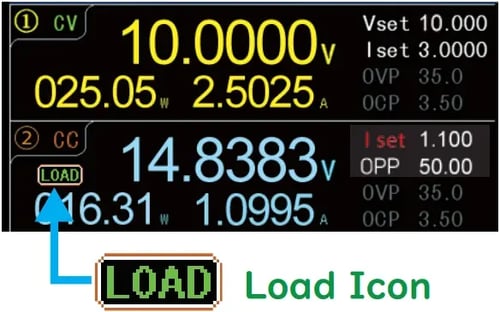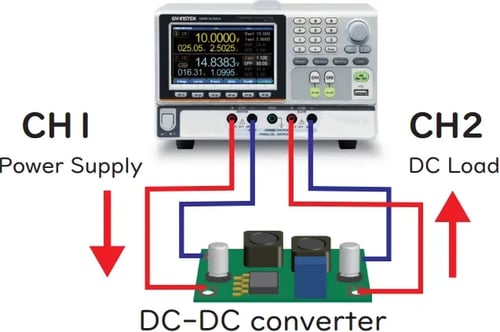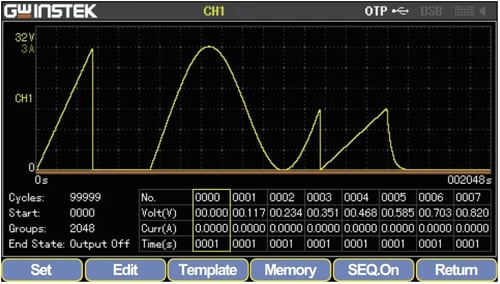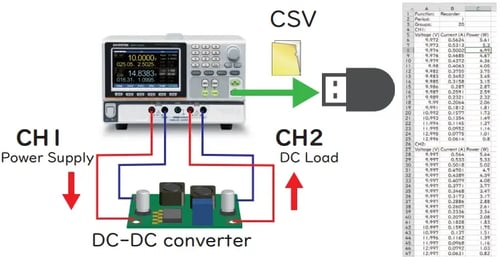DC Load regulation parameter is one of the basic but very important characteristics of a power supply or DC-DC converter. It is usually described as "capability to maintain a constant voltage level on the output channel of a power supply despite changes in the supply's load" and is usually described in datasheets. In many cases, this information can be used as a baseline, assuming the power supply is operating under typical conditions.
It is, however, often the case that the input or output parameters for a power supply are unpredictable or may change in time. These situations are possible, for example, when powered by unstable power sources such as solar panels or wind turbines or other electrical generators. It is very important to understand what the DUT parameters will be under a variety of conditions.
On the other hand, constant load situations are quite rare. In real world loads are rarely constant and active. In most cases they vary over time and often in a non-linear way.
Therefore, it is very important in the design process, in the prototype testing phase, to test a real DUT under real conditions when the input power parameters and the output load parameters are changing. The worst thing that can happen is the finding at the mass production or use stage that the selected DC-DC converter does not work correctly under certain conditions. Especially after many weeks of waiting for delivery of components, as is typical in the world nowadays.
One of the easiest ways to determine the DC Load regulation characteristic is to simulate the actual operation of a DC-DC converter using a laboratory power supply on one side and a chain of high-power DC resistors on the other side. However, this method gives only a very rough idea of the DC Load regulation parameter and only for a resistive load. This is clearly not enough for a complete test.
For a full test a programmable power supply and a programmable electronic load should be used that, in this combination, allows all possible variations of input and output parameters to be emulated. Even better is when both devices are combined into one and can work both independently and in combination. Note that in this case we are also able to test the dependence of output parameters on input parameters. That is, in fact, to perform a Line Regulation tests.
An example of such a solution is GW Instek's GPP-x323 series of programmable power supplies. Its channels not only provide 32V/3A output power, but also have a built-in programmable electronic load function for 32V constant voltage (CV), 3.2A constant current (CC) and 1k constant resistance (CR).

All commutations, depending on the mode of operation selected, are automatically performed within the power supply, which greatly simplifies the process itself and ensures error-free operation.

In fact, the GPP-x323 series is a multi-output power supply that not only has high readout resolution (0.1 mV/0.1 mA) and transient response time of≦50 µs, but also the power output of channel 1 and channel 2 can be switched to a power consumption input. The GPP-x323 can simulate the battery power consumption of an electronic device and simultaneously charge the battery or emulate an external power supply. Set the GPP-x323's channel 2 current drain according to the power consumption of the electronic device and set the output voltage and output current of channel 1 according to the battery charging specifications. The GPP-x323 can perform simple charging and discharging tests without connecting to an electronic load. Tests can be performed on a limited test site and the cost of purchasing test equipment can be reduced.
The GPP-Series provides the sequential output function on Channel 1 and Channel 2. This function not only allows users to edit the power output waveform, but also allows users to set the sequential constant voltage (CV) or constant current (CC) load waveform, i.e. a serial power output or a simulation test of a dynamic load. In order to simplify the setting of waveform editing, the GPP-Series has 8 built-in Templet waveforms in the sequence output function for users to directly apply for output, including Sine, Pulse, Ramp, Stair Up, Stair Dn, Stair UpDn, Exp Rise, Exp Fall waveforms.

The maximum settable points for sequence function are 2048, and interval range of each point can be set from 1 to 300 seconds. The editing data of the sequence output can be stored in the internal 10 sets of the memory or saved to USB flash drive as *.SEQ or *.CSV file (up to 614400 points). The stored *.CSV can be exported to Excel for editing and analysis. The final edited file can be imported back to the power supply using a USB flash drive.

Thus, one of the basic but critical characteristics of a DC-DC converter or power supply can be determined very easily and very accurately with modern low-cost affordable and available instrumentation equipment.


